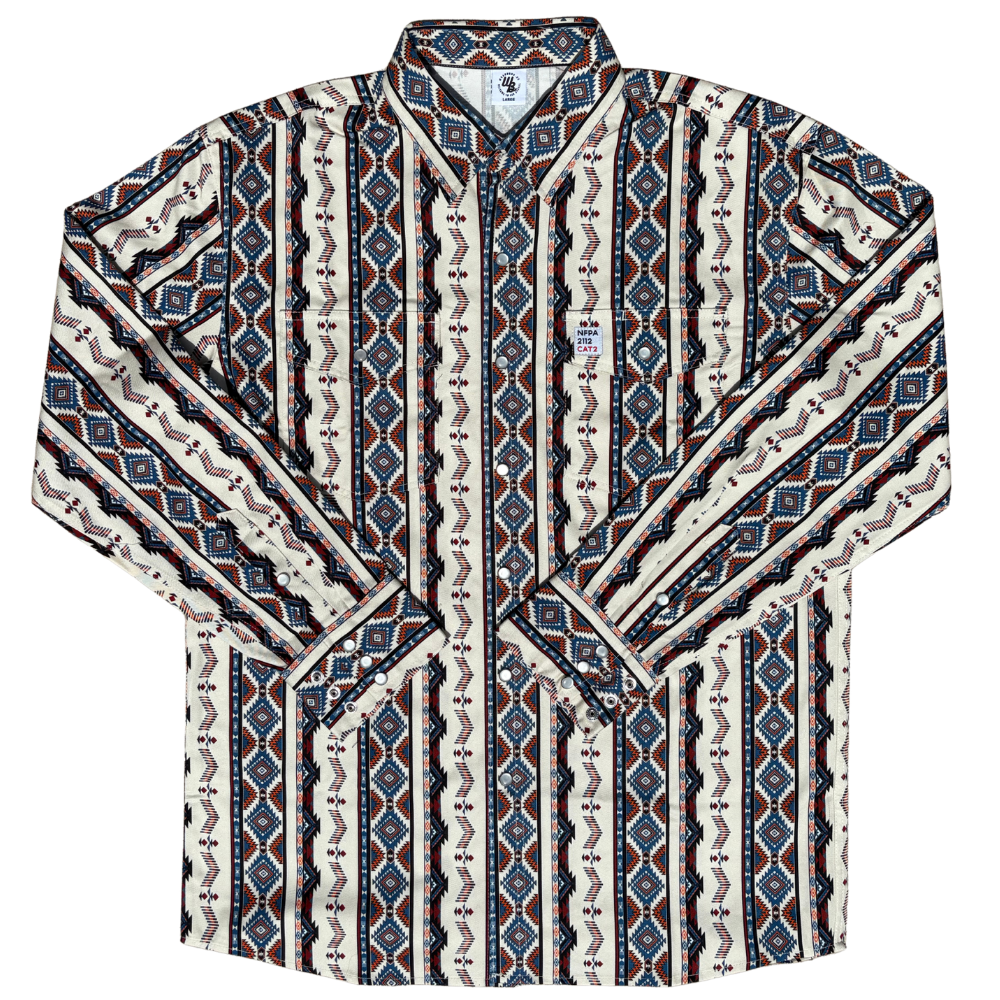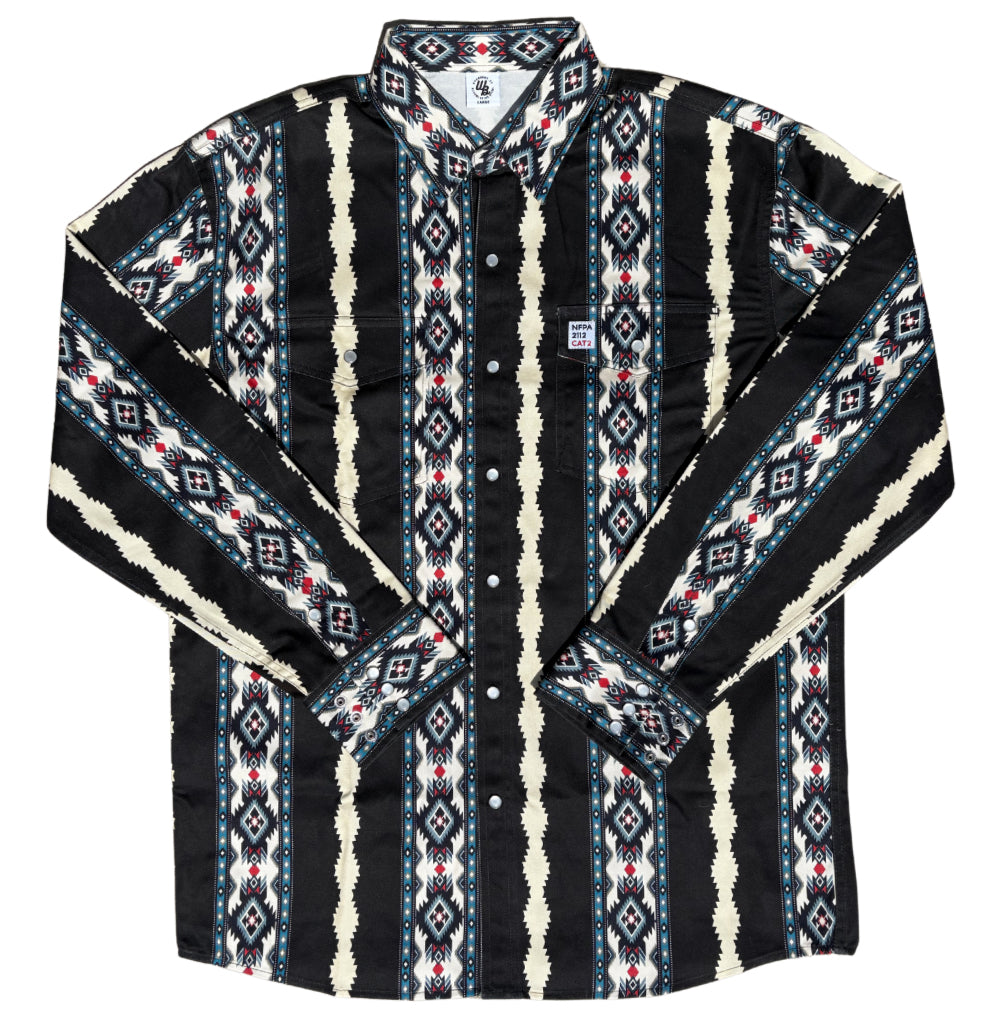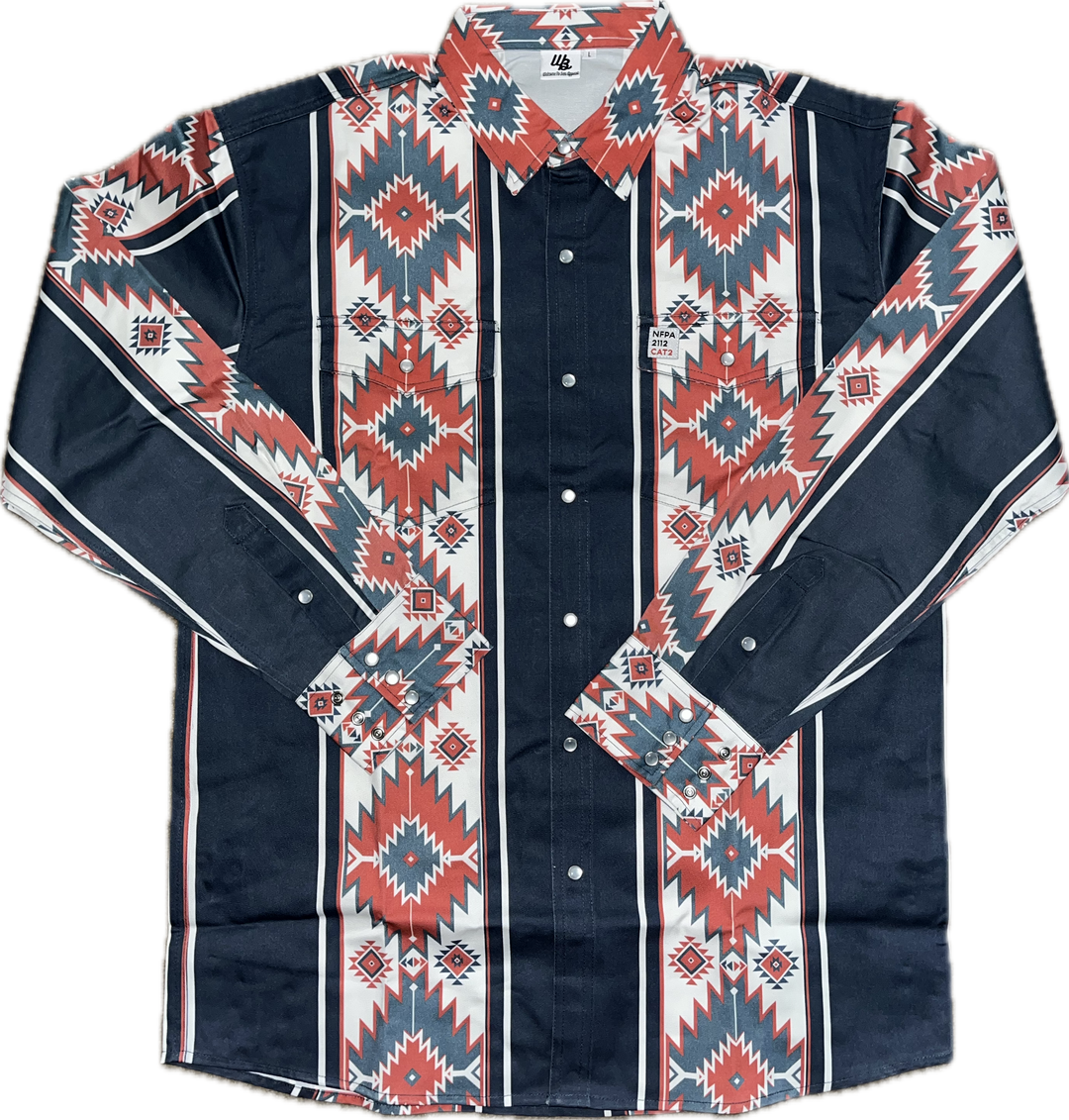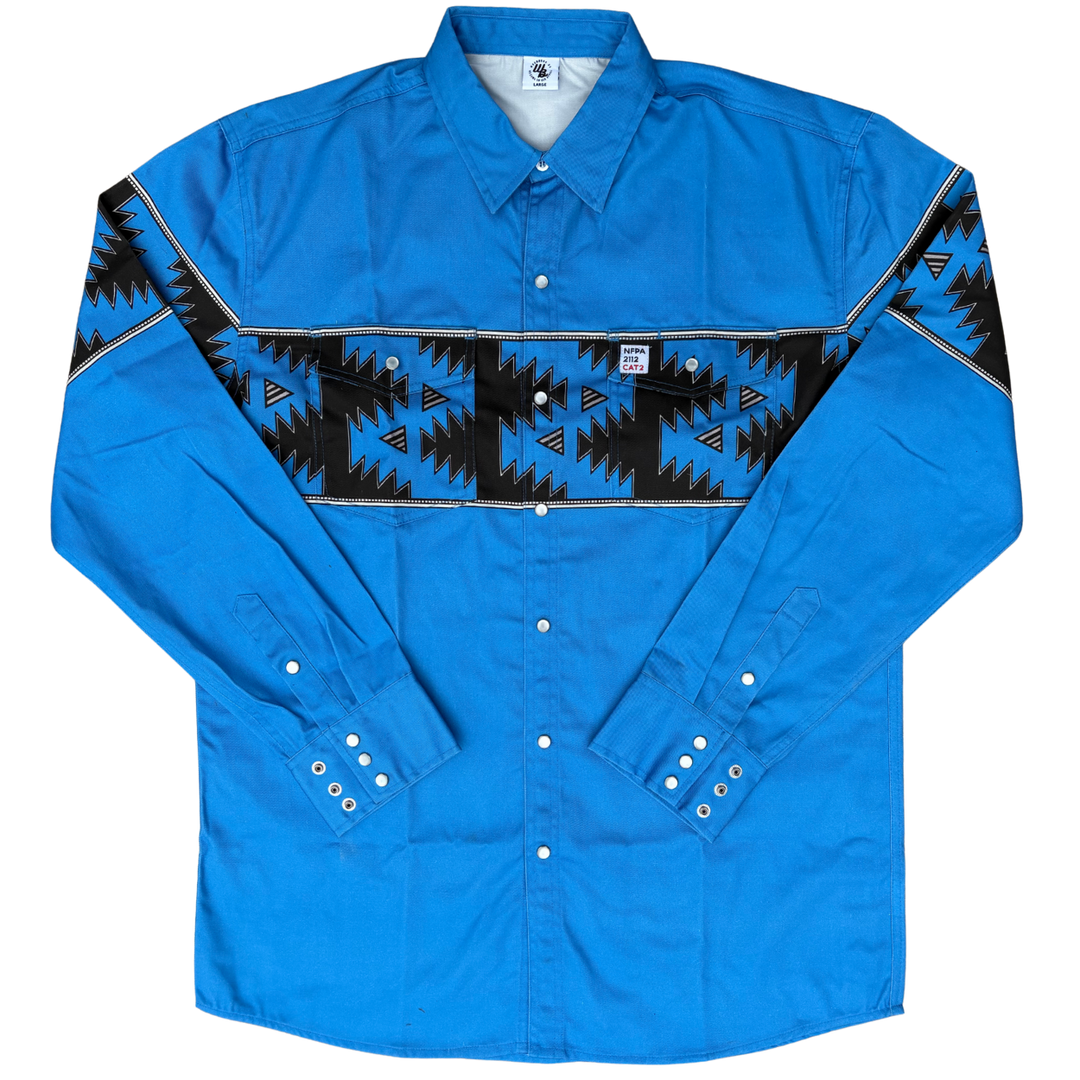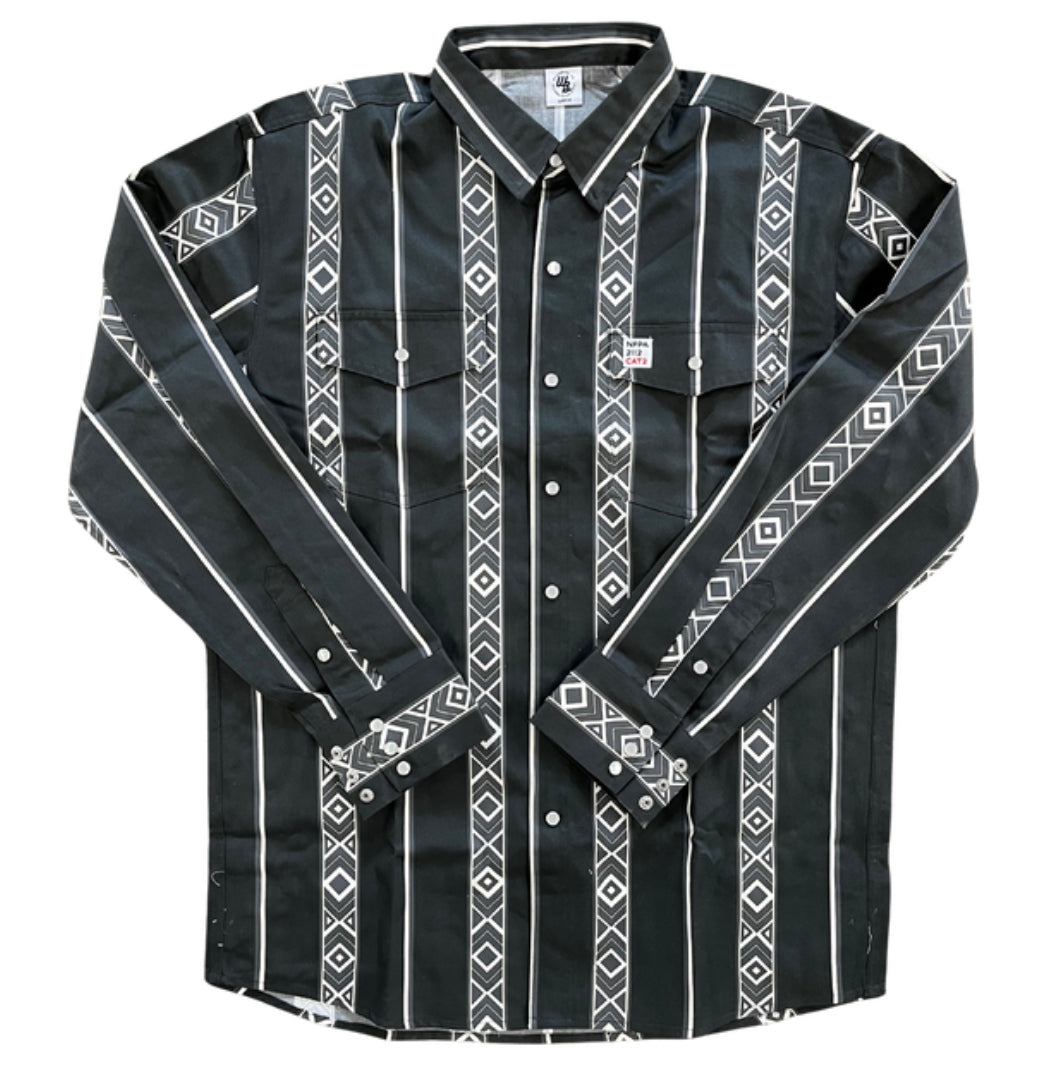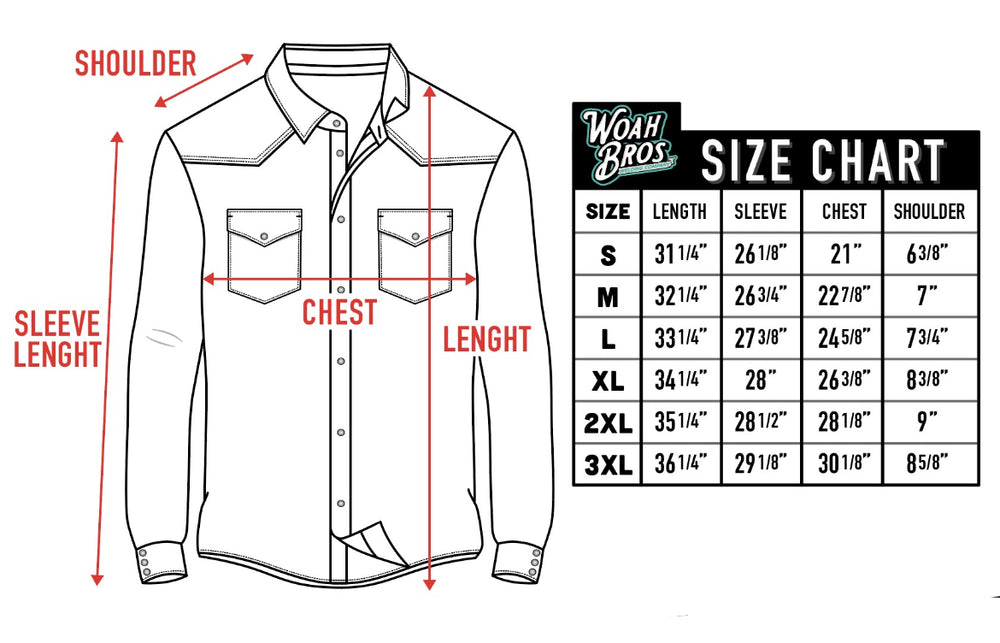The Evolution of FR Clothing in the Welding Industry
Welding has always been a job that comes with sparks – literally. From the earliest days of metalworking to today’s high-tech worksites, welders have needed gear that can stand up to heat, sparks, and flame. This blog post takes a beginner-friendly look at the evolution of FR clothing (flame-resistant clothing) in the welding industry. We’ll explore the history of flame-resistant clothing globally and see how humble leather aprons gave way to modern high-tech fire-resistant workwear. Along the way, we’ll highlight key innovations, safety standards (like NFPA 2112 and ASTM F1506), and how the use of FR clothing for welders has changed over time. Let’s dive in!
Early Days: Leather and the First Flame-Resistant Workwear
Long before synthetic flame-resistant fabrics, welders and blacksmiths relied on good old-fashioned materials to protect themselves. In ancient times, people discovered certain materials were hard to burn – for example, the Greeks found that asbestos cloth wouldn’t catch fire easily . (Of course, asbestos had its own health issues, so that was a dead end!) By the Middle Ages and early industrial era, craftsmen knew that heavy wool or leather could offer some fire protection. Wool doesn’t ignite as easily as thin cotton, and leather is tough, thick, and naturally resistant to heat and sparks .
It’s no surprise then that as welding emerged in the 19th and early 20th centuries, workers donned leather welding aprons, jackets, and gloves as their primary protective gear. Leather was “the” material for welders during the Industrial Revolution thanks to its durability and heat resistance . A traditional leather apron could shield the torso and thighs from flying sparks and molten metal. Heavy cotton canvas was also used for clothing underneath, since cotton burns less readily than synthetic fabrics and won’t melt into the skin. Early welders basically layered up in any thick, non-melting clothes they could find – think leather coats, woolen shirts, and denim pants – to avoid burns.
Did it work? To an extent, yes: leather and thick natural fabrics do provide a barrier against spatter and flame. But they had downsides. A full leather welding outfit is heavy and hot to wear. Welders in the old days often got overheated and fatigued under those cumbersome aprons and jackets . The gear was also pretty stiff and not very breathable. In short, early welding PPE kept you safe from fire, but it wasn’t comfy!
Interestingly, the concept of “flame-resistant” clothing was already on people’s minds well before modern times. As early as the 17th century, firefighters and theater workers were treating fabrics with chemical solutions to make rudimentary flame-retardant gear. For example, in 1632 a Parisian theater used a mix of plaster and clay on stage curtains to reduce fire risk . In the 18th century, experimenters used alum and ammonium salts to make fabrics less flammable . And in 1821, French chemist Joseph Louis Gay-Lussac discovered that dipping cloth in certain salts (like ammonium phosphate and borax) made it resist flames – a groundbreaking idea at the time . These early scientific efforts didn’t immediately change what welders wore (Gay-Lussac’s treated fabric would lose its fireproofing as soon as it was washed ). However, they set the stage for the innovations to come.
20th Century Breakthroughs in Flame-Resistant Clothing
The real evolution of flame-resistant (FR) clothing picked up in the 20th century. A major milestone came in 1912, when British chemist William Henry Perkins improved on past experiments by adding stannic oxide (tin oxide) to cotton fabric, creating one of the first flame-retardant textiles that could survive multiple washes . At last, a fire-resistant treatment didn’t immediately wash out – Perkins’ method kept the fabric flame-resistant even after two years of laundering, a huge breakthrough for that era .
Despite these early advances, flame-resistant workwear didn’t become common overnight. Through the early 1900s, welders still mostly wore leather and heavy cotton. But behind the scenes, science marched on. The mid-20th century (1930s–1950s) saw rapid development of new materials and chemicals, partly driven by World War II and industrial growth . Researchers (including the U.S. Army Quartermaster Corps) worked on better protective fabrics for soldiers and workers . One key discovery was THPC (tetrakis(hydroxymethyl)phosphonium chloride) in 1953 – a chemical that could be applied to cotton to make it durably flame-resistant . This was a game-changer for cotton work clothing, allowing manufacturers to produce flame-retardant cotton fabrics that wouldn’t easily ignite. In fact, the THPC-based process (later commercialized as the Proban® treatment) chemically modifies cotton fibers so they self-extinguish when exposed to flame .
Safety awareness was also growing. High-profile accidents and the general post-war safety movement led to laws like the Flammable Fabrics Act of 1953 in the U.S., which banned dangerously flammable clothing textiles . No more retailing kids’ pajamas that could burst into flames – manufacturers now had to ensure a basic level of flame resistance in consumer fabrics. This law didn’t specifically target welding gear, but it showed a broader recognition that clothing should not be a fire hazard. By the late 1960s, workplace safety was in focus too – the U.S. established OSHA in 1970 to enforce safety in industries including welding .
Perhaps the most revolutionary leap in FR clothing material came from the labs of DuPont in the 1960s. In 1967, DuPont introduced Nomex®, an aramid fiber that is inherently flame-resistant (it doesn’t burn or melt in air up to high temps) . Nomex was first used for race car driver suits and firefighter uniforms, but soon found its way into industrial workwear. For welders, a jacket made of Nomex or a similar aramid meant you could have a lighter-weight, flexible garment that still resisted flames and heat – a stark contrast to heavy leather. Around the same time, DuPont also developed Kevlar® (famous for bulletproof vests). Kevlar is not only super strong but also has excellent heat resistance, so it started appearing in items like welding sleeves and gloves to add cut protection and thermal insulation . Another high-performance fiber, PBI (polybenzimidazole), was introduced in the late 20th century and boasted an extremely high melting point. PBI doesn’t burn until around 1300°F (700°C), making it ideal for things like firefighters’ gear – and yes, even certain welder’s apparel has used PBI blends for added protection .
In short, the late 20th century brought an explosion of new FR fabrics. Treated flame-resistant cotton blends (e.g. Indura® in the 1980s), inherently FR synthetics like aramids, and other innovations gave clothing manufacturers a whole toolkit for designing safer work clothes. By the 1970s and 80s, welding jackets didn’t have to be only leather – you started seeing flame-resistant cotton duck coats, aluminized suits (to reflect radiant heat), and combo designs (leather in high-spark areas, flame-resistant cloth elsewhere for mobility). This period was the turning point when FR clothing moved from niche experiments to mainstream safety gear.
Key Innovations Timeline (Quick Recap)
- 1821: Gay-Lussac uses chemical salts to create the first flame-retardant (though non-durable) fabrics .
- 1912: Perkins develops a washing-resistant flameproof textile using stannic oxide .
- 1950s: Flame-resistant cotton research advances with THPC chemical treatment (1953) . U.S. Flammable Fabrics Act (1953) bans ultra-flammable clothing .
- 1967: DuPont introduces Nomex® aramid fiber, an inherently flame-resistant material, revolutionizing FR clothing .
- 1970s: Workplace safety laws (OSHA) and early industry FR programs appear. Employers in high-risk industries (petrochemical, etc.) start adopting FR workwear to prevent severe burn injuries .
- 1980s-1990s: Wider use of FR uniforms for welders, electricians, etc. New standards and more FR fabric options (Kevlar®, PBI fibers, better FR cotton) become available.
- 2000s: Flame-resistant workwear becomes standard PPE in many welding and industrial jobs, driven by safety standards and improved technology (more on this below!).
Safety Standards Drive the Rise of FR Workwear
As the benefits of FR clothing became clear, official safety standards and regulations emerged to make sure workers were protected. In high-risk fields like welding, oil & gas, and electrical work, these standards transformed FR gear from a nice-to-have into a must-have.
One major catalyst was the realization in the 1970s that flash fires and electric arcs were causing horrific burn injuries – and that proper clothing could greatly reduce the harm. Regulatory bodies responded by creating rules for flame-resistant PPE. For example, the National Fire Protection Association (NFPA) developed NFPA 70E, a standard for electrical safety that, by around 2000, explicitly required workers to wear arc-rated FR clothing for certain electrical tasks . Around the same time, employers and OSHA (the Occupational Safety & Health Administration) began enforcing these rules, meaning if you were welding or working near flammable hazards, you needed appropriate FR attire .
For the welding industry specifically, general OSHA regulations already mandated that welders wear “appropriate protective clothing” for the job . This was interpreted to mean materials that won’t melt or ignite. ANSI Z49.1 (a welding safety guideline) also recommended covering all skin with durable, flame-resistant materials to prevent burns . In practice, this meant companies had to move away from letting welders wear ordinary poly-cotton work shirts (which could catch fire or melt) – instead, they provided flame-resistant shirts, jackets, pants, and coveralls as part of the required PPE .
Several specific standards have played a big role in the evolution of FR clothing:
- NFPA 2112: First issued in 2001, NFPA 2112 is a U.S. standard that sets minimum performance requirements for flame-resistant garments used to protect workers against flash fire hazards . It defines tests for fabric flame resistance, heat transfer, and how much body burn protection a garment provides. Welders in industries like petrochemical or mining often wear NFPA 2112-certified coveralls if there’s any risk of a sudden fire. This standard basically guarantees the clothing won’t sustain burning if briefly exposed to flames.
- ASTM F1506: This is a performance specification for textiles used in arc flash and flame-resistant apparel. Introduced in the mid-1990s (ASTM published it in 1994), ASTM F1506 requires fabrics to pass a battery of flame-resistance tests (for example, the ASTM D6413 vertical flame test) and, if applicable, to have an arc thermal protective value (ATPV) for electric arc flash protection . Many FR welding garments in North America meet ASTM F1506, ensuring they won’t ignite, melt, or drip in the event of an electrical arc or flame exposure. Essentially, it’s a quality benchmark for FR work clothing.
- International Standards (ISO 11611): Globally, there are standards too. ISO 11611 is the international standard specifically for protective clothing used in welding and allied processes . It sets requirements that welding jackets, aprons, sleeves, etc. must meet – such as resisting a certain level of heat, flame, and molten metal splash. ISO 11611 even classifies garments by protection level (Class 1 for light welding, Class 2 for more intense welding with lots of spatter) . In Europe and many other regions, welding clothing has to be certified to EN ISO 11611, which gives welders worldwide confidence that their gear will perform under fire.
- Other Standards: There are additional standards like NFPA 70E (for electrical work) and NFPA 2113 (guidelines on selecting/using FR clothing), as well as Canadian standards via CSA, all of which reinforce the use of FR garments in various trades . The common thread (no pun intended) is that by the 2000s, national and international regulations were firmly stating: if your job involves potential flames, arcs, or sparks – you need flame-resistant clothing.
These safety standards dramatically increased the adoption of FR clothing. After OSHA clarified rules in 2010, for instance, oil & gas companies rushed to outfit workers in certified FR coveralls . In the welding world, companies large and small started providing welders with FR uniforms daily, not just a leather apron for when they remembered to wear it. Compliance became the norm, and with larger production volumes, FR workwear also became more affordable and accessible over time.
Modern FR Clothing for Welders: Safer and More Comfortable
Fast forward to today – what does flame-resistant clothing for welders look like in the modern era? In a word: high-tech. Over the past few decades, FR gear has evolved from bulky and utilitarian to advanced and user-friendly. Modern fire-resistant workwear not only protects better than ever, it’s also designed for comfort, versatility, and even style.
Protection Improvements: Today’s FR fabrics can protect against multiple hazards at once. A single welder’s jacket might be rated for arc flash protection, flash fire resistance, and welding spatter all together. These garments are made of special fibers or blends that will self-extinguish if ignited, instead of bursting into flame. They don’t melt and drip like regular synthetic blends would . This gives a worker precious escape time – if a welder’s shirt catches a hot spark, the fabric will char and self-extinguish, rather than fueling the fire. As an OHS safety article put it, modern FR clothing offers ignition prevention or self-extinguishing properties that “help prevent continual burning and grant workers potentially lifesaving escape time” . That’s a huge leap from the days of a cotton shirt that could keep burning.
Material Advancements: The comfort gap between FR clothing and regular clothing has narrowed a lot. Those new fabric technologies we mentioned (Nomex, Kevlar, PBI, etc.) and their descendants have been refined for wearability. Engineers developed FR blends that are softer, lighter, and breathable. For instance, companies like Westex and Milliken created FR cotton/nylon blends that feel like a normal cotton shirt but won’t ignite . Moisture-wicking FR fabrics keep welders cool in hot environments. Some FR jackets even have aluminized outer layers to reflect radiant heat away. Compared to the stiff, heavy leather gear of yesteryear, modern FR garments can be surprisingly comfortable. They’re often lighter and more flexible, reducing fatigue during long hours of work . As one welding apparel company noted, fabrics like Kevlar and Nomex have “brought about a significant shift in the level of protection and comfort for welders,” being much lighter than leather yet offering equal or better protection .
Design and Style: Believe it or not, style is now part of the equation too! Flame-resistant clothing used to come mostly in one flavor: think drab gray coveralls. But today you can get FR workwear in all sorts of colors and forms – from orange high-visibility FR jackets to khaki flame-resistant work shirts. Major workwear brands have FR versions of their popular designs, so welders aren’t stuck with a one-size-fits-all coverall. There are FR jeans, FR hoodies, even FR t-shirts. The old joke about “real welders have burn holes in their clothes” is less true now, because smart welders just wear FR clothes that look normal but don’t burn. And it’s not just about looks: features like reflective tape are being added for jobs where visibility is key, combining hi-vis and FR in one garment. For example, some modern welding shirts have reflective strips so you’re visible and fire-safe on a construction site at night .
From the Shop Floor to the Field: Another change in usage over time is that FR clothing has spread beyond industrial sites. It’s now common for anyone welding – whether on an oil rig or in a small auto repair shop – to wear flame-resistant attire. In the past, a hobbyist welder in their garage might have just thrown on a cotton sweatshirt and hoped for the best. Nowadays, affordable FR welding jackets and sleeves are readily available, so even DIY welders are upgrading their safety. Professional welders, of course, often have employers who supply their FR uniforms and laundering services, making it easy to wear FR gear every day. The culture has shifted such that wearing FR clothing is just part of the routine, like putting on your helmet or gloves. This is a big change from decades ago, when some workers resisted FR gear due to comfort issues – modern FR clothing is comfortable enough that compliance has improved. As one safety manager quipped, the more comfortable the PPE, the more likely workers are to actually wear it , and that definitely applies to FR apparel.
In terms of safety performance, today’s FR welding clothing is leagues ahead. It’s been refined by countless hours of testing, incident investigations, and feedback from the field. Standards like NFPA 2112 ensure that any garment sold as “FR” truly does its job. Manufacturers compete to not only meet the standards but exceed them with new features. For example, many FR garments for welders now have no exposed metal parts, because metal could heat up and cause burns. Snaps and zippers are often covered or made of high-temp plastic, and designs avoid open pockets where hot sparks could collect . These little design tweaks came from lessons learned over years of real-world use.
Conclusion: A Burning Commitment to Safety
From heavy leather aprons and woolen shirts to cutting-edge flame-resistant workwear, the evolution of FR clothing in the welding industry has been remarkable. What started as simple trial-and-error (“let’s use this thick leather, hope it doesn’t burn”) has transformed into a science-driven effort to protect workers. Each innovation – a new chemical treatment, a new fiber like Nomex, a new safety standard – built on the last, making welders safer and more comfortable.
Today, a newbie welder might take for granted that their jacket won’t catch fire and their pants won’t melt if hit by a spark. But that peace of mind is thanks to decades of development and hard-won safety knowledge . Modern FR clothing for welders is the culmination of global history, from ancient discoveries to contemporary tech. And the evolution isn’t over – research continues into even better materials (like “smart” fabrics that could monitor heat exposure). The goal is always to reduce risk and prevent injuries.
In the end, the widespread use of flame-resistant clothing has undeniably made welding and other hot-work jobs far safer than in the past. It’s a shining example of technology and standards working hand in hand: chemists invent the fabrics, and standards bodies ensure those fabrics do what they promise. So the next time you zip up a flame-resistant welding jacket, remember – you’re wearing a piece of history (and one very smart piece of gear!). Stay safe, and happy welding!
Sources:
- Strongarm Welding Blog – Evolution of the Welding Apron: From Leather to Modern Materials
- FR Outlet – A History of Flame-Resistant Clothing
- WorkingPerson.me – A Brief History of FR
- Occupational Health & Safety (ohsonline.com) – The Evolution of Flame-Resistant Clothing
- Occupational Health & Safety – Covering the Bases: Welding PPE from Head to Toe
- NFPA (via Ironclad PPE blog) – NFPA 2112 Flash Fire Protection
- Tingley Rubber PPE blog – Safety Manager’s Guide to FR Rainwear (ASTM standards info)
- Big Bill Workwear Blog – Ensuring Welding Safety with ISO 11611
- Rasco FR Workwear Blog – The Rise of Flame Resistant Work Shirts
- OSHA Standard Interpretation – Clarification on FR Clothing for Welders




